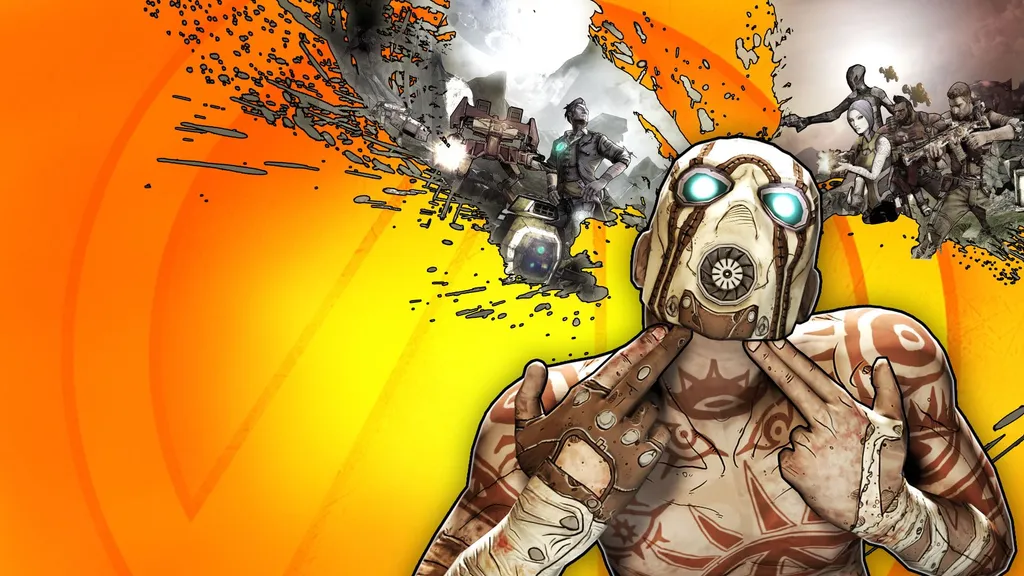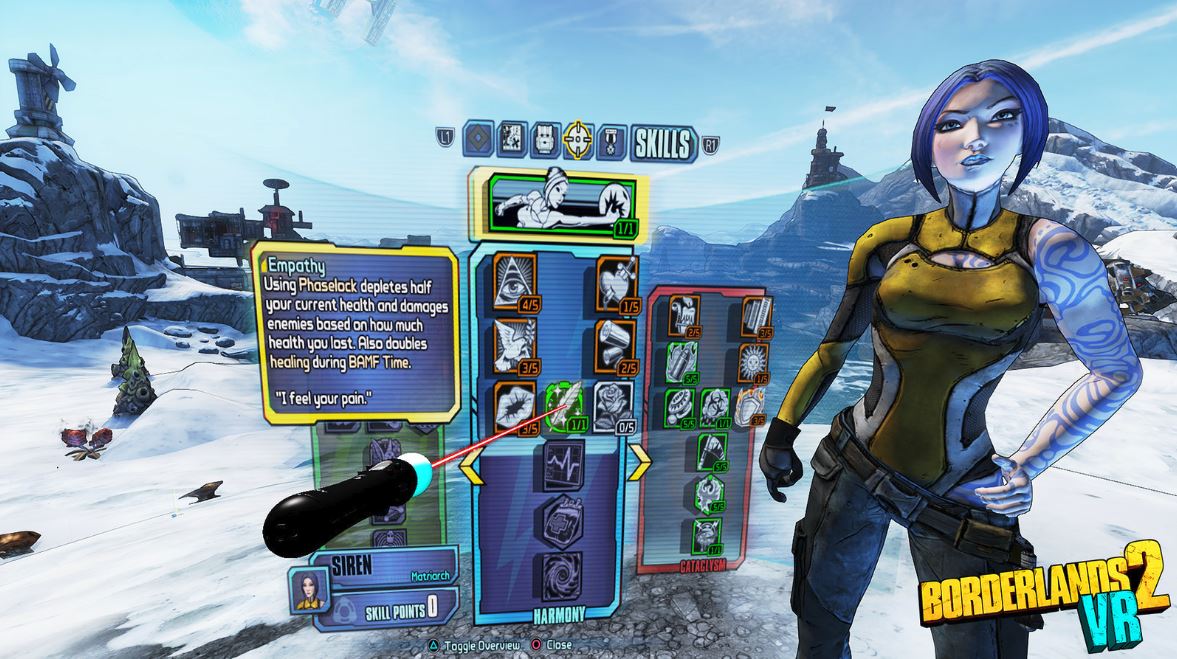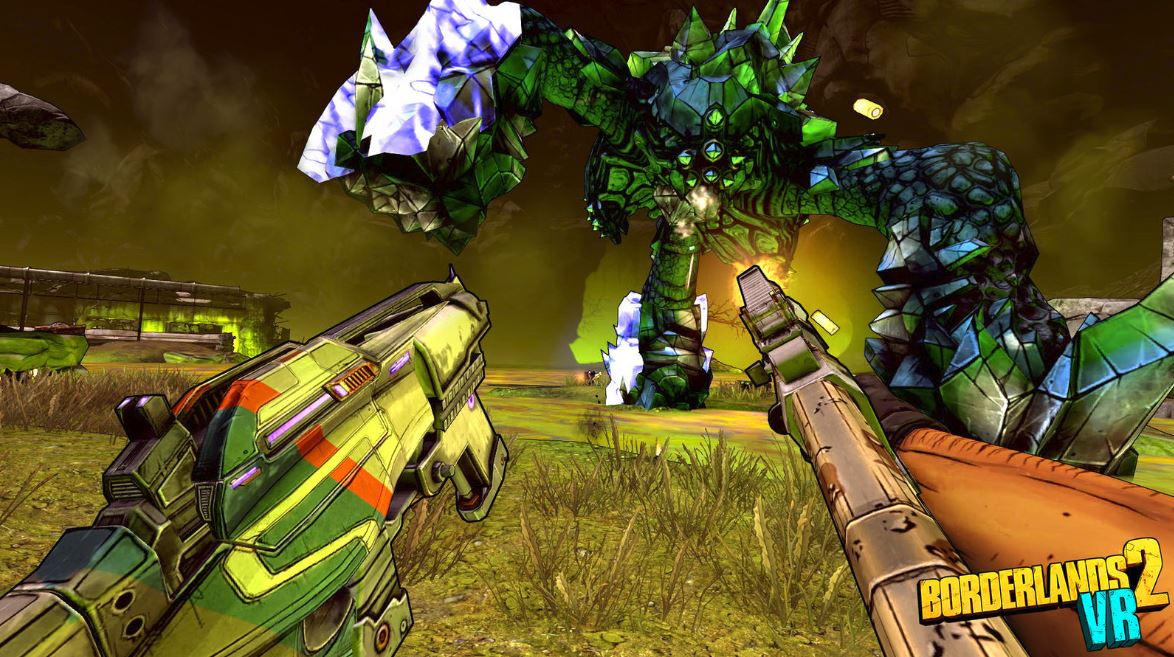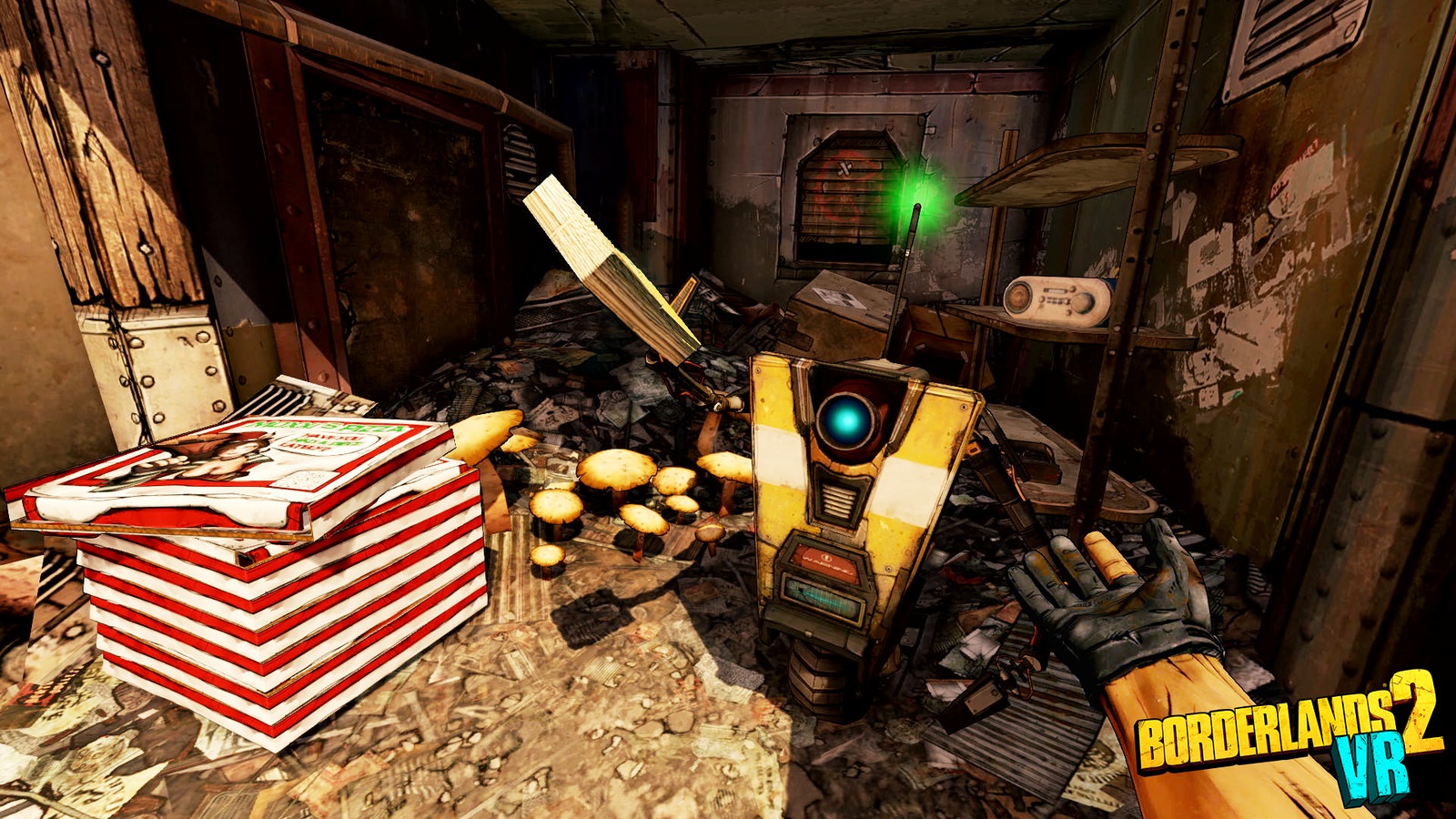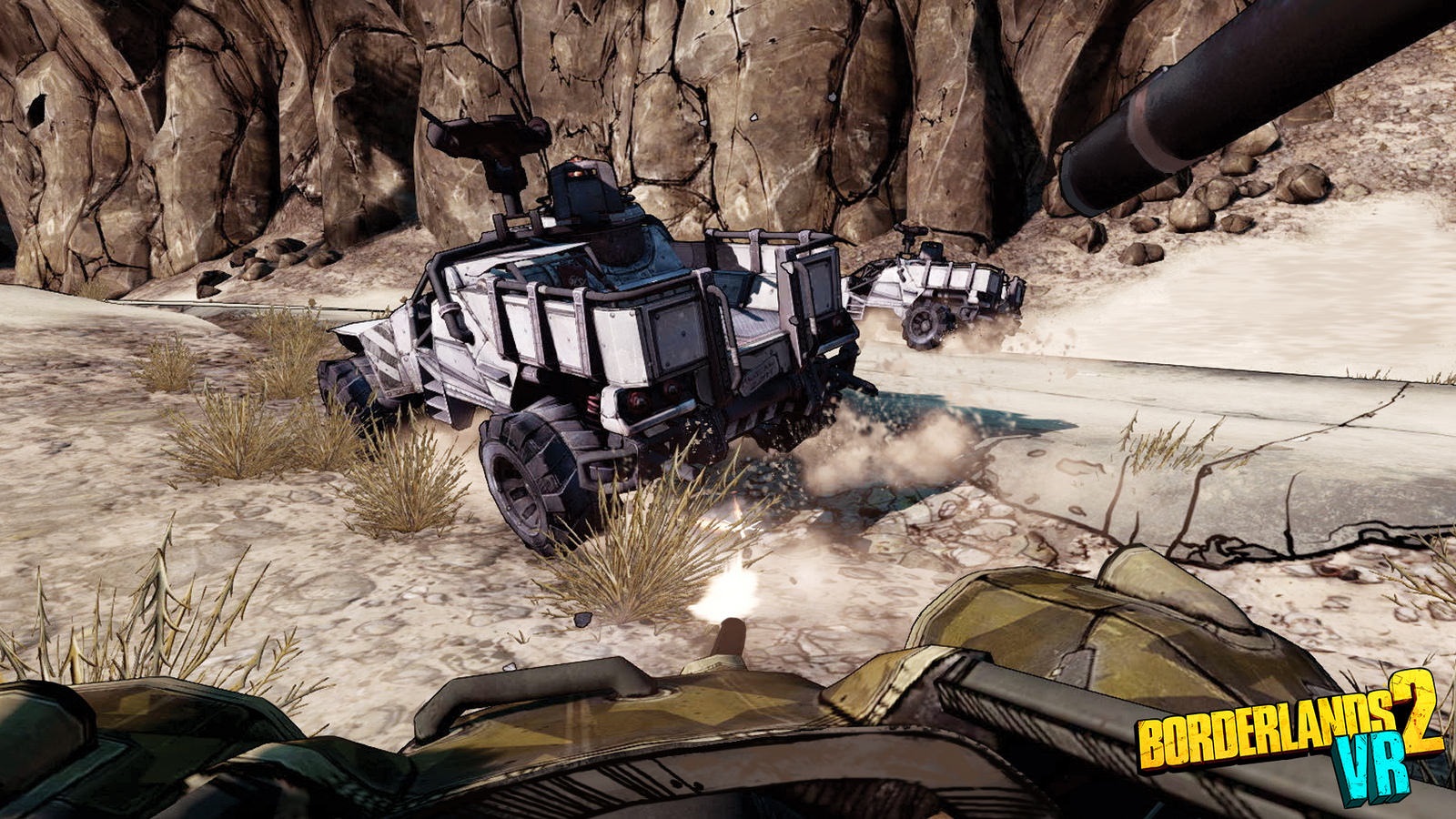The original Borderlands 2 is a hallmark shooter in the game industry. Not only did it help popularize the idea of “looter shooters” like Destiny, Warframe, and even Gunheart or From Other Suns by adapting Diablo-style gameplay to a an action shooter setting, but it still stands, over six years later, as one of the funniest games ever made. Gearbox’s writing here is rivaled perhaps only by Valve’s Portal series and it establishes an addictive gameplay loop of killing enemies, watching loot explode out of their bodies like confetti, and doing tons of amazing things over and over again for dozens of hours.
Now, Gearbox and 2K Games are back to try and replicate that magic once again (for a third time if you count the existing Handsome Collection on PS4 and Xbox One) with Borderlands 2 VR. They’ve crammed the entire base game onto PSVR from top to bottom (mostly) with a few tweaks along the way to make it feel a little bit fresh. The results are mostly positive.
In Borderlands 2 VR you take on the role of one of four Vault Hunters, sent to the lawless and ravaged world of Pandora to track down ancient, valuable treasure. Upon your arrival your plans are derailed by the twisted and deranged Handsome Jack, forcing you to go on a conquest across Pandora to fight off his minions, loot hundreds (perhaps even thousands) of guns, and take the fight to him in an absolutely ludicrous and wacky adventure.
What makes Borderlands 2 VR so special is its loot randomization. Each time you kill an enemy or open a loot container like a chest the game randomly decides what to give you. It might be a shotgun, or an assault rifle, or revolver, or something else and all of its stats like damage, fire rate, accuracy, and clip size are randomly picked. Then there are alternate effects like elemental damage (flame and electric for example), blowing up when you reload, exploding bullets, scopes, and more. Put all of that in a blender with a dash of unique designs and styles and it’s easy to understand how they arrived at the number “87 bazillion guns.”
To be clear though, Borderlands 2 VR does not include any multiplayer at all. Despite the fact that the entire series has always been predicated off of rampant and chaotic cooperative fun, it’s entirely absent from this version of the game. Not only that, but none of the post-launch DLC (of which there was a lot) is included either. And finally, even though it seems like an obvious fit in the same vein as DOOM VFR, Farpoint, and Firewall Zero Hour, Borderlands 2 VR on PSVR does not support the PS Aim Controller — it’s PS Move or DualShock 4 only.
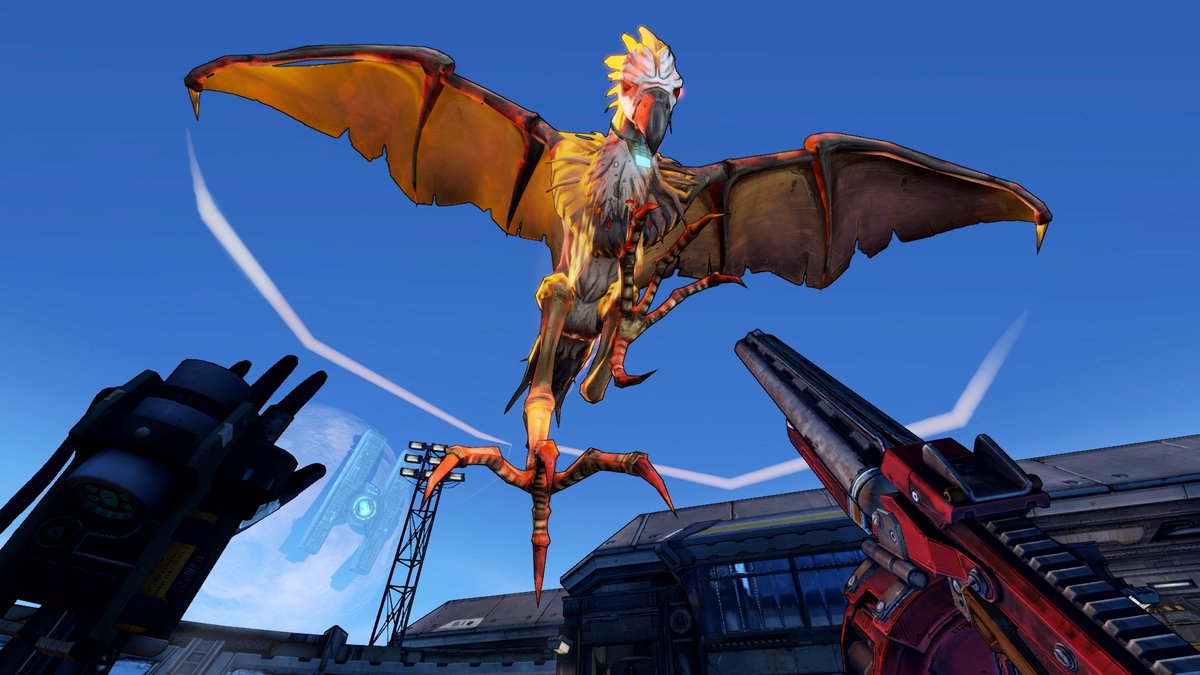
Even without the DLC though Borderlands 2 VR still packs at least a solid 30+ hours of content and if you aim to clear most of the side quests, New Game+ modes, and farm for the most powerful and legendary gear that could double or triple in hours spent. Not to mention replaying the game as an alternate Vault Hunter since all four have wildly different playstyles. Other than perhaps Skyrim VR, Borderlands 2 VR is arguably the longest and most content-packed PSVR game on the market.
It’s just a shame that you won’t be able to explore the vast world of Pandora with friends this time around. Having played the original game and its predecessor, it feels strange to not have a partner or two at my side. Clearly you can tell the game was originally designed with co-op in mind given the four complimentary characters and the main menu even lists your username off to the side as if to make room for other names down below. Whether you generally play these kinds of games with friends or not, the absence of any multiplayer support is a noticeable void that isn’t filled.
Gearbox did do a good job of reworking all four skill trees to make each character self-sufficient, such as buffing Maya’s Phaselock power to grant more healing and even to do more damage so she can take out groups more easily. I just couldn’t shake the feeling that literally everything about Borderlands 2 VR would have been better had they retained multiplayer support. It feels empty in some ways without it.
In addition to the Siren, Maya, there’s also the stealthy Assassin, Zer0, who can go invisible and deploy a decoy hologram of himself, Salvador the Gunzerker, who can dual wield two guns of any type for maximum damage, and Axton the Commando, who can deploy a turret to aid himself on the battlefield.
Since Borderlands 2 VR was originally a non-VR game (like Skyrim VR and Fallout 4 VR) this is a game that’s not entirely optimized for the medium. For example, menus are just flat boxes that float in front of you and frequently clip through the environment, becoming impossible to read or navigate. Pointing and clicking through flat 2D menus is never fun in a VR game. Visually it looks good because the bold, bright cel-shaded art style translates to the limited resolutions of VR headsets well. Draw distance can be an issue at times and the black border around all characters and objects can occasionally blur details from far away.
Borderlands 2 VR essentially has four control schemes: three different ones using the PS Move controllers or a standard FPS scheme with the DualShock 4 plus PSVR head tracking. With PS Move you can either just use teleportation movement, a mixture of teleportation and smooth movement, or just smooth movement with an added jump button. I opted for the latter for the first few hours but eventually switched to DualShock 4 only and I’ll tell you why.
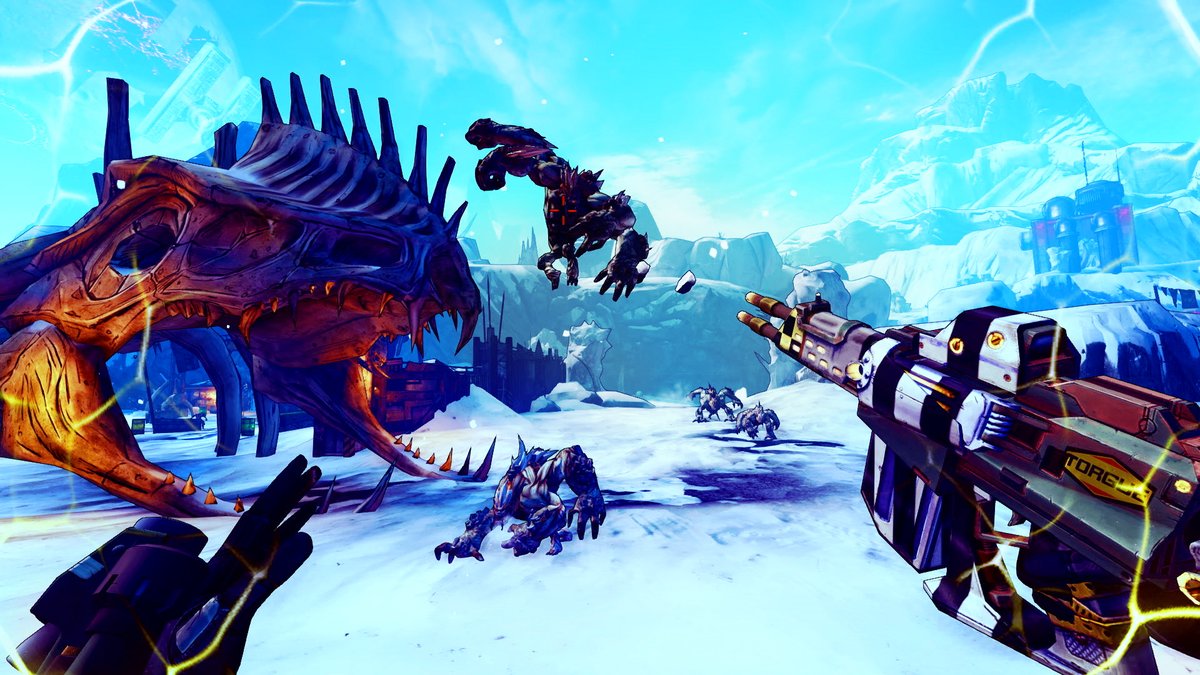
The PS Move controllers are a big problem for Sony’s VR platform. In a game like Skyrim VR I could look past them (partially) because of that game’s slower pace and lack of fast movement while in combat, but when playing a pedal to the metal shooter like Borderlands 2 VR my gamer brain is hard-wired to backpedal and circle strafe while shooting. I’m not gonna just stand still. The PS Move controllers make that incredibly frustrating to do.
To use smooth movement with PS Move, since there are no analog sticks at all, you point the left controller where you want to go and hold down the Move button in the center of the controller. That often means aiming backwards or steering it from side to side like an imaginary joystick. In your dominant hand (that’s right for me, but you can do a lefty swap) you press the bottom face buttons to rotate left and right. Doing things like jumping through the air, twisting around to line up a shot, then sprinting across a level while lobbing grenades, dodging bullets, and ducking behind cover in between reloading and navigating the chaos of a Borderlands 2 VR firefight are common and cumbersome. It feels like all of the enemies have been nerfed to be wildly inaccurate most of the time just because it’d be too tough to play otherwise.
All that being said, it’s still perfectly playable and fun. Driving vehicles in first-person is a blast with the PS Move controllers, lining up shots with a sniper rifle feels powerful, and once you level up a bit to stabilize your crosshair and accuracy everything starts to click. It takes getting used to, but it’s absolutely playable with PS Move — but I can’t shake the feeling that most of the entertainment is there because it was already a great game that’s shining through in spite of the poor controllers. That’s why I eventually just opted to play with DualShock 4 (since there is no PS Aim support) so I could actually rotate my view with an analog stick like a sane person instead of using face buttons.
That probably sounds like a lot of complaining, but that’s because it mostly comes from a place of true adoration for Borderlands as a franchise and Borderlands 2 as a non-VR game. The staggered stuttering of teleportation movement just doesn’t feel right for a game like this, even if it does technically function, so the lack of analog sticks makes motion controls, my preferred way of interacting with a VR world, more frustrating than it should be.
But if you can look past that or if you don’t mind playing with a DualShock 4, Borderlands 2 VR is an absolutely thrilling adventure from start to finish. You’ll laugh, you’ll yell, you’ll scream, and you might even cry just a little bit from all the hysterical cackling.
If you’ve already played Borderlands 2 to death previously, I’m not sure this reinvents things enough to warrant another go. While Borderlands 2 VR is certainly a well-made and action-packed experience, it’s still the same game that came out six years ago, only this time it’s like you’re there instead of just watching through the window of a TV.
Borderlands 2 VR is a good port of a great game that could have been better. The lack of analog sticks on the PS Move controllers hampers the motion control layout to the point of being frustrating and the absence of multiplayer as well as the lack of any existing DLC leaves a massive void. The small gameplay tweaks aren’t enough to rewrite a game that was designed around four-player co-op, but the core of the experience is so strong, rewarding, and entertaining that it serves as a feature-rich and exciting VR shooter in its own right despite its flaws. If you’re looking for a PSVR game to really sink your teeth into with dozens of hours of content, then Borderlands 2 VR is still an easy recommendation.
Borderlands 2 VR releases on December 14th as a timed-exclusive for PSVR at a price point of $49.99. You can probably expect to see the game on PC VR devices sometime next year in 2019. Read our Game Review Guidelines for more information on how we arrived at this score.

